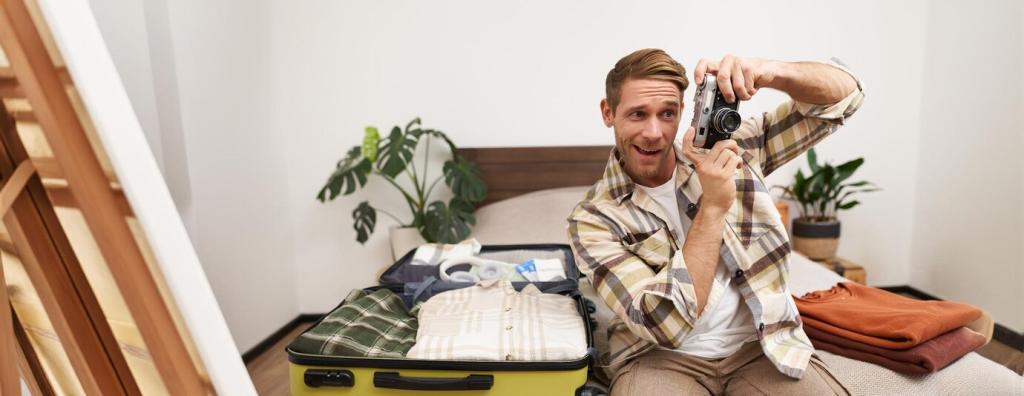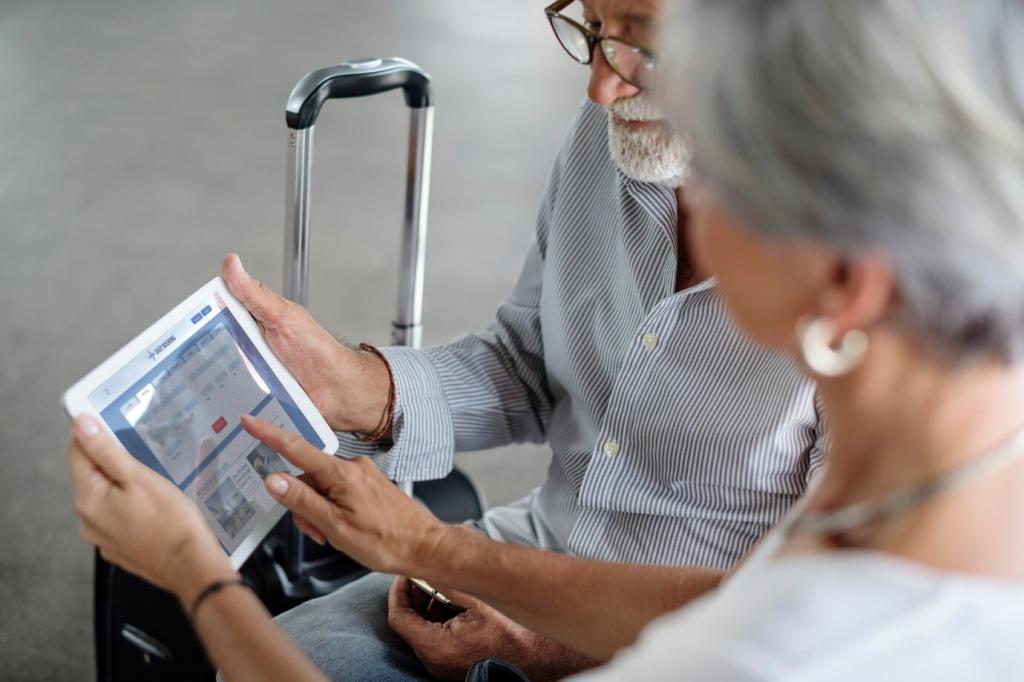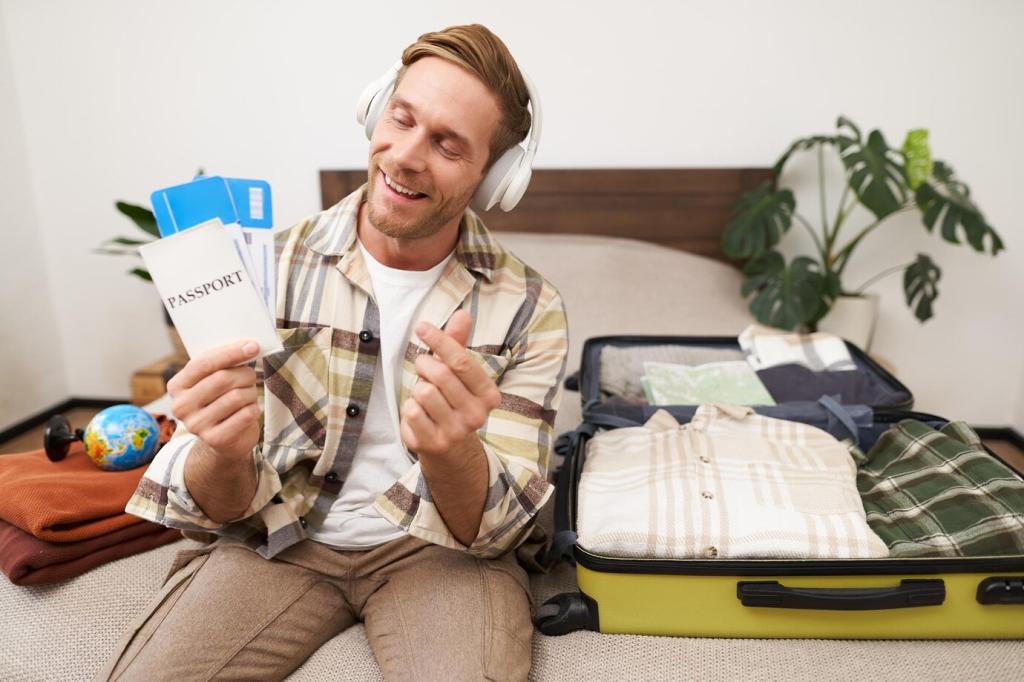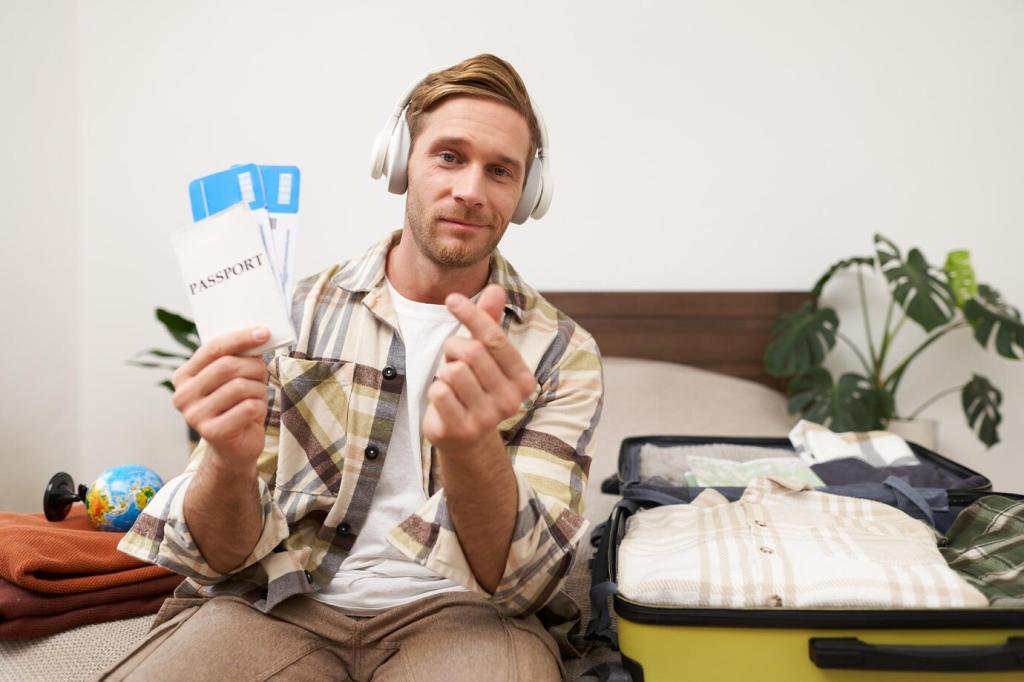Packing Strategy and Day-Of Travel Checklist
Assign clothing to colored cubes—blue for tops, gray for bottoms, red for sleepwear—so finding items takes seconds. Keep a small cube just for morning medications and nightly toiletries. Label with large, legible tags. Consistency eliminates rummaging and maintains energy for the enjoyable parts of your itinerary.
Packing Strategy and Day-Of Travel Checklist
Place heavy items near the suitcase wheels to reduce arm strain. Your personal item should hold medications, documents, chargers, a cardigan, and a small snack. Use exterior pockets for reading glasses and hand sanitizer. A tidy personal item becomes your mobile command center and calms every transition during travel.






